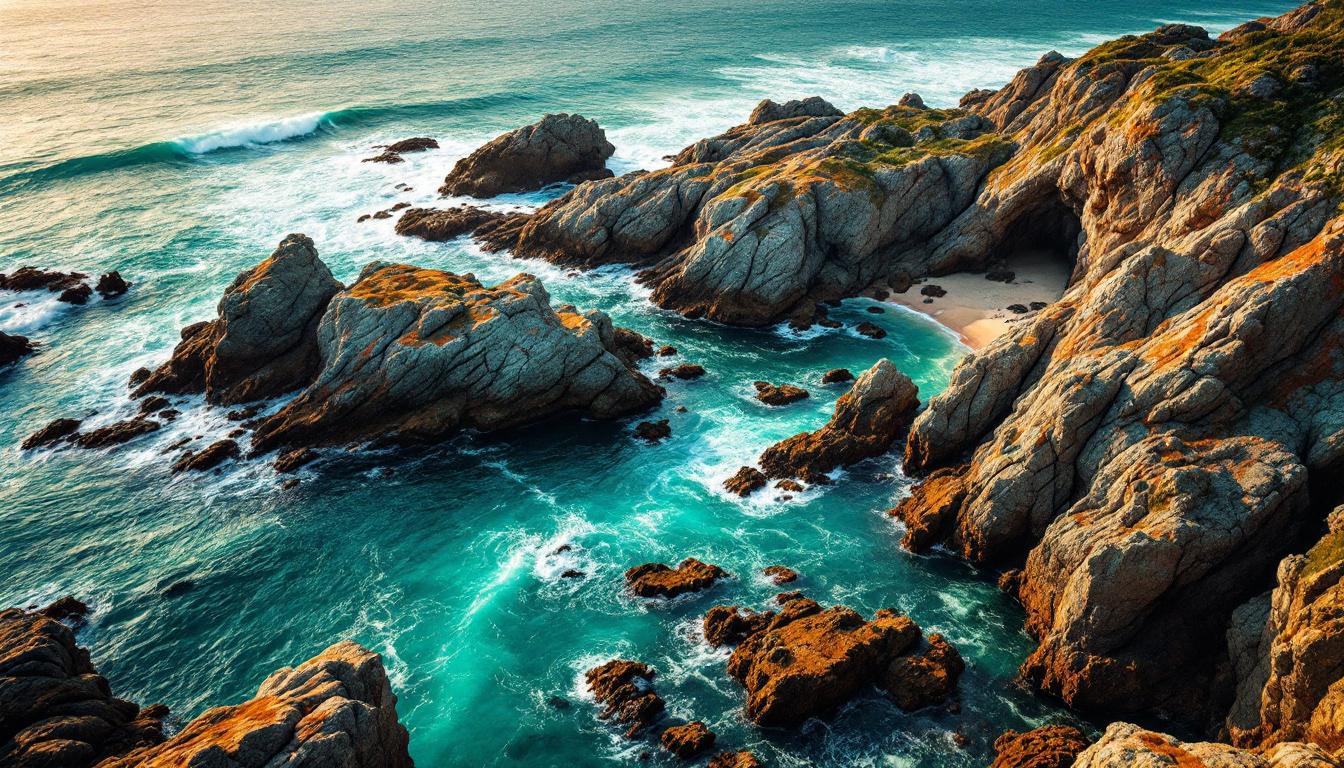Standing on Cornwall’s rugged coast where ancient ocean floor meets modern sky, I discovered something that completely redefined my understanding of Britain’s geological treasures. Kynance Cove isn’t just another pretty beach—it’s the only place in the UK where you can walk across 300-million-year-old serpentine rocks that gleam like polished jade in the Atlantic light.
This isn’t hyperbole or travel marketing speak. The Lizard Complex represents the largest and best-preserved ophiolite in Britain, a rare slice of ancient oceanic crust thrust onto land during the Variscan Orogeny. What makes Kynance absolutely unique is its complete geological sequence from mantle to oceanic crust—something you simply cannot experience anywhere else in the UK.
While tourists flock to overcrowded St Ives and commercialized Newquay, this small cove on the Lizard Peninsula offers something infinitely more extraordinary: the chance to touch rocks that once formed the bottom of a primordial ocean, now transformed into serpentine formations that locals call “Porth Keynans”—the ravine cove.
The geological marvel that exists nowhere else in Britain
Ancient oceanic crust exposed by dramatic forces
The serpentine rocks at Kynance Cove formed when seawater infiltrated the oceanic mantle 400 million years ago, creating hydrothermal metamorphism that produced these distinctive green and red formations. The Mohorovičić Discontinuity—the boundary between Earth’s crust and mantle—is actually visible here as a color change from deep green to rust red along the cliff faces.
Tremolite formations found nowhere else in the UK
The cove hosts Britain’s largest tremolite outcrop alongside bastite-rich serpentinite, creating a geological palette that shifts from jade green to deep crimson depending on mineral composition. These tremolite-bastite contrasts occur in such dramatic fashion only here, making Kynance the ultimate destination for understanding Britain’s deep geological history.
Why this tiny cove outshines Cornwall’s famous beaches
Authentic exploration without tourist trap chaos
Unlike St Ives’ crowded harbors or Newquay’s commercial surf scene, Kynance Cove remains refreshingly uncommercialized. The National Trust manages access thoughtfully, ensuring the geological formations and rare Cornish heath ecosystem stay pristine. You’ll find dramatic wave-cut caves accessible at low tide rather than overpriced beach bars and parking nightmares.
Scientific significance that rivals world-famous sites
Geologists compare the Lizard Complex to Cyprus’s Troodos Ophiolite and Oman’s Semail Ophiolite—yet you can explore this world-class geological site without international travel. The complete ophiolite sequence here includes mantle peridotite, gabbro intrusions, and sheeted dyke complexes that tell the complete story of oceanic crust formation.
The exclusive experiences you cannot find elsewhere
Tide cave exploration through ancient rock formations
At low tide, you can explore caves carved through 300-million-year-old serpentine, walking paths that reveal the geological boundary between oceanic mantle and crust. The Tremolite Stack Island becomes accessible, offering close examination of mineral formations that exist nowhere else in Britain with such clarity and preservation.
Rare flora thriving on serpentine soils
The unique chemistry of serpentine soils supports Cornish heath and wild asparagus found nowhere else in the UK. This ecological exclusivity stems directly from the geological uniqueness—the high magnesium content and heavy metal traces create growing conditions that support specialized plant communities evolved specifically for ophiolite environments.
Planning your visit to Britain’s geological crown jewel
Optimal timing for geological exploration
Visit during low tide periods between May and September for maximum cave access and optimal lighting on the serpentine formations. The South West Coast Path provides excellent approach routes, though the dramatic clifftop sections require proper hiking preparation and respect for the fragile coastal ecosystem.
Respectful exploration of this protected landscape
The National Trust emphasizes Leave No Trace principles to protect both geological formations and rare plant communities. Stay on designated paths, avoid removing rock samples, and time your visit to minimize impact on nesting seabirds that use the clifftops during breeding season.
Standing where ancient oceans once flowed, touching rocks that witnessed the formation of continents, you’ll understand why Scotland’s remote islands and France’s medieval villages suddenly seem ordinary by comparison. Kynance Cove offers something genuinely unrepeatable: the only place in Britain where you can experience 300 million years of Earth’s history preserved in stone.
This isn’t just another beach recommendation—it’s an invitation to witness geological processes that shaped our planet, accessible only here in Cornwall’s most extraordinary corner. The ancient ocean floor awaits your discovery.
